


Date: Wed, 02 Jun 1999 09:31:35 -0400
From: David Disney (disney7@icx.net)
Cold Air Intake Review
The products tested in this review are:
Stock FD3S Intake
Mostly Mazda Intake (M2)
Pettit Intake
I wish I could have tested one of the PFS intakes - just couldn't afford to buy a third unit just for testing. Anyone know how it is designed or where it gets its air from?
I'm assuming that the Pettit/N-Tech units are similar as well as the M2/Rx7Fashion intakes. If there are significant differences between them let me know.
Here is how the tests were performed. The car was driven through two areas. The first area was a rural highway where the air temperature was 75 degrees F. The second area was a cool valley area where the air temperature was 68 degrees F. Data was taken in both areas at 60 mph. Additionally, upon finishing the road tests, the car was allowed to sit at idle until the temperature readings stabilized. This was done to see the effect of the airbox while sitting in traffic.
The car was brought up to operating temperature and then shut off for several minutes before leaving for measurements. This was done to allow everything in the engine compartment to heat soak so that it would be nice and warm and the effect of fresh incoming air could be seen. I used a thermistor placed about one inch away from the filter element for temperature readings. On the aftermarket intakes, the sensor was placed between the dual cone filters (above one and below the other).
I did my best to drive the car in a similar fashion in all three runs trying the same speeds/throttle usage at the same points on the roads.
Here is a table of my findings, with comments below:
Temperatures are in degrees F. STOCK M2 PETTIT IDLE 147.4 137.5 162.3 HIGHWAY 97.7 112.5 124.2 VALLEY 90.8 104.2 122.9
As you can see, the stock airbox performs best with regards to intake temperature with exception of idle temps. I believe the thick plastic of the stock box heat soaks pretty badly.
The Pettit intake's temperature did not drop much when going from the highway to valley area. This tells me that most of its air is being sucked from the engine bay. Also, any speed above 30 mph didn't cause significant changes in the temperature. It got really hot when the car wasn't moving.
The M2 intake's temp did drop when going from the highway to valley area, which would indicate that it is getting fresh air (though not as fresh as the stock box). I could also tell a difference in intake air temp based on speed. The faster I went, the cooler the intake air (dropped by about 5 degrees from 60mpg to 80mph, went back up 5 degrees from 80mph to 60mph). Also, the temperatures in the M2 box dropped/stabilized very quickly at idle and when the car was shut off. I didn't take readings of how long it took the temp to stabilize, but it seems to bleed off heat much better that either the stock or Pettit units.
Bear in mind that I paid no attention to the amount or velocity of the air entering the intake systems. I am sure that the aftermarket units allow more air in more quickly that the stock box. The intake ducting for the stock box is restrictive and the stock systems contains at least three ninety degree turns.
So, here's my opinion.
If you are worried about intake temps, keep the stock airbox and put a K&N element in it.
If you want more air to get to the turbos and are willing to put up with slightly higher intake air temps, go with an enclosed box like the M2 or Rx7Fashion. The sealed boxes force the air to be drawn from the crack between the radiator and frame rail. While this isn't really a great source of ram air, at least it isn't engine compartment air. Oh, the M2 box isn't actually sealed. It has an opening in the front/side area (probably to make it easier to install). This opening is mostly blocked off when the unit is installed, but I suspect it may take advantage of any fresh air that leaks in around the headlight/hood seams. I believe the Rx7Fashion unit is completely sealed (except, of course, the hole in the bottom where it gets air).
Do not go with an open type system such as the Pettit/N-Tech. There is no way in hell that it will draw in fresh air. They will draw air from the engine compartment. They will not magically only use the air that flows up from under the nose of the car. Also, this air from under the nose of the car would be ok, except that they are depending on ram air. You just won't get much ram air from there. It can't come from below because of the engine under cover. It has to come from the nose of the car, make a left hand turn at the radiator and squeeze between the crack between the radiator and the frame rail.
Let me reiterate. Don't buy the Pettit/N-Tech systems if you want fresh air. They should not be calling them Fresh/Cold Air Intakes. If they had ever tested the intake temps they would know better. I'm sure these units are great for getting more/less restrictive air, but they should be calling them something else. Even the manufacturers of the sealed boxes (M2/Rx7Fashion) should probably change the name, as they bring in warmer air than stock.
Below are some notes I typed up regarding the Pettit and M2 intakes:
Pettit:
If you take a look at Pettit's web page you will find a description of their cold air intake. Below is an excerpt.
"Outstanding design features include two big K&N lifetime filters (one for each turbo), a unique cold air duct which draws in cool outside air (rather than superheated engine compartment air), our unique EAM manifold which routes emission and accessories discharge to a third K&N filter (virtually eliminating turbulence from the main induction tract), thus maximizing intake velocity and flow."
OK. Let me describe their "unique cold air duct". It is a piece of aluminum that wedges between the radiator and the K&N air filter assembly. It basically keeps the extremely hot air that exits the radiator from radiating up directly on to the filter assembly. That's it. There is no "duct". Their method of providing fresh air is to remove the foam padding that goes between the radiator and the frame rail on that side of the car and hope that some fresh air will enter here. Not much chance of that. You won't get much fresh air from under the car. Because the engine undertray caps that area off fairly well. You won't get much air from the front of the car unless it decided to take a left turn around the radiator and flow into the crack between the radiator and the frame rail. Yes, some air will enter here, but not much. You also won't get jack if the car isn't moving.
This thing might provide a very small amount of fresh air if you are doing Mach I down the interstate. If you are stuck in traffic, you are sucking up massive amounts of very hot engine compartment air. There is no way that the filters are going to draw in fresh air (that has to make a couple of ninety degree turns to get to the filters) when it is much easier to use the toasty engine compartment air that is available all around them. After driving the car at moderate levels, the air filters are extremely warm to the touch. They won't burn you, but you wouldn't find it comfortable to leave your hand there.
Also, the intake hoses for the turbos (the two large hoses that the K&N filters attach to) are completely unsupported. They just tied them together with their connectors and left them to flop around freely. No, they can't go far in that cramped area, but they hang there on their own weight.
I also didn't like the fact that you have to strap the EAM manifold (the silver piping) to the upper radiator hose to hold it in place. I don't know why I didn't like this; it just seemed like a crappy way of doing something.
Now, understand that I am slamming Pettit's Intake, but I am not slamming Pettit. They have some extremely nice, helpful people there and I'm sure their other products are great.
Mostly Mazda:
I liked this unit. The construction was very nice. Installation was easy (much easier that the Pettit unit). It seems to push the primary turbo host back just a bit further than I'd like, but I haven't had any trouble with it. It would have been nice if they had included some instructions with it, but it wasn't hard to figure out. They could have thrown in an allen wrench also (to remove the top of the box with). Finally, the filters could have been mounted a little lower in the box as it is, the top of the box mashes the upper filter when you tighten the box top down. This sounds like several gripes, but I would recommend the unit to a friend. Also, the M2 box sounds much better than the Pettit unit. Pettit uses an odd hose with sound baffles to silence the air pump discharge. It sounds like a cow in pain most of the time. The M2 box uses a different method and is much quieter. I can still hear it slightly, but passengers have never noticed it. Blow off valve noise is a little louder with the M2 unit, but not objectionable.
________________
Here are my comments on Dave's review.
Nice review.
I had a few comments on it based on my experiences with the M2 intake, which I have on my car.
If you adjust the filters in the M2 intake to mount at an angle, the top will not mash them down. In fact, it won't even touch them. The filters have an angled neck on them (the rubber piece the hose clamp goes around).
My intake gets so hot I am surprised it doesn't glow after a bit of spirited driving. (But then so does anything under the hood - the car just runs hot.) I think that the M2 unit would have a very high idle temp compared to the others if you measured idle temps after a hard run. (But then again, the others might get just as hot.)
Other gripes I had about it: MM should have supplied new hose clamps. The stock ones were almost impossible to get back on. Also, the hose for the airpump does not reach. You need to go to your local auto parts store and buy about a foot of hose.
I had such fun installing mine :-) that I wrote up installation procedures on it. Go to my site, and to How-to --> Engine (Other) --> Intake Installation.
But the bottom line is that is a very high quality unit, and does what it is supposed to. I would buy again from MM if I had it to do over.
Anyone have the Tri-Point unit for comparison purposes?
In regard to the N-Tech unit, doesn't Nick provide instructions in how to open up passages for fresh air? His also looks to be a lot better sealed than the Pettit unit, so it would draw less hot air from under the hood and more fresh air. Plus it is cheaper. --Steve
________________
I am thinking of getting some of the insulating material racer supply places sell. It is basically a reflective insulation-padded sheet of material that should reflect some of the heat away from the intake. You can even get the self-adhesive kind, or get the standard kind that you need to glue on with a silicone adhesive.
Another idea is those "space blankets", aka emergency thermal blankets that are basically a sheet of the same kind of foil they use to insulate spacecraft. I have a couple of these sitting around from camping. It might be worth cutting one up as an experiement. They are about $10 at outdoor stores. --Steve
________________
Date: Wed, 02 Jun 1999 11:36:23 -0400
From: David Disney (disney7@icx.net)
Just got this message from Rick S. telling me that the N-Tech intake is not identical to the Pettit unit. He says:
>You have not properly evaluated the N-Tech Intake to draw such a >conclusion. I am not trying to endorse their products. I have owned a >Pettit and now currently use the N-Tech unit. The Pettit does draw more >hot air than I would prefer. I like the N-Tech because it came with 2 >aluminum panels that are mounted below the intake and are used to duct >fresh air in toward the inlet of the airbox. A portion of the black >plastic under tray is cut to accomidate these aluminum ducts. Also the >OEM foam next to the passenger side of the radiator is removed to allow >more air in towards the filters as is done with the Pettit Intake. I am >not familiar with the MM Intake so I cannot speak for that system. I >would be interested in seeing your testing include the N-Tech. I would >expect the results to be more favorable than the Pettit.
________________
Date: Tue, 30 Jun 1998 14:17:45 -1000
From: richardt@lava.net (Richard H Thomason)
I have owned an HKS, PFS and Pettit intake. The PFS is the quietest with the Pettit not far behind. The HKS was loud.
_______________
Date: Fri, 27 Aug 1999 15:51:13 -0700
From: "Jim LaBreck" (jimlab@earthlink.net)
Just thought I'd point out that the difference between products don't always equate to which makes more horsepower. There are, of course, aesthetics and design to consider, but in the case of filters, even if the foam filters (HKS, etc.) made EXACTLY the same horsepower gains that the paper filters (K&N, etc.) made, there is one glaring difference in the design of the two, and even differences among the paper filters.
A recent test in a Japanese publication of the more popular filters revealed horsepower gains to be almost identical, varying by at most, perhaps 3 horsepower between filters. However, they went a step further and performed a filtration test to determine which filters were better at keeping particles out of the engine, which is, after all, what a filter is supposed to do, isn't it? They performed the test using a vacuum cleaner to provide suction and a clean filter in the vacuum for each intake filter they tested. They used particles of 2 different size and apparently sprinkled the particles on to the filter while the vacuum was running.
The results? The HKS filter, not surprisingly, stopped very little debris from entering the engine, although it did provide a reasonable horsepower increase over baseline. The #2 filter was the K&N, providing what they termed "good" filtration properties and which made more horsepower than the other filters. The #1 filter was the A'PEX power filter, which filtered the most effectively and still made 14.1 horsepower (Japanese rating system) over the baseline, which was a stock filter, I believe, on a MK III Supra. The other filters varied from a low of 11.0 ps for the Sard filter.
I've uploaded the results, but I didn't create a fancy page...
(listed in alphabetical order, file sizes are large; 250-280k each)
(Ed.'s note: In addition to Jim's comments about the study, I would add that this comparison does not take into account how the filters performa as INTAKES, i.e.- if/how they draw cool air vs heated underhood air, how good the pipes are (Mandrell vs crush bent), how they mount, etc.) i.e.- the study only addresses the filter part of the intake, not the whole system. This is still good info. --Steve

The K&N is supposed to flow a bit better than the stock paper filter. I have heard that it will also pass a bit more dirt into the intake than the paper filters. The concensus on this seems to be that the amount of dirt that it passes over the paper kind is pretty negligable.
A few people were experiencing a problem with poor fit of the K&N air filters in the stock air box. Dave took a survey on this to determine the frequency of this problem:
Date: 21 Oct 1997 17:22:40 -0400
From: David.Alberti@fisc.com
> Thanks to those who responded on my question > concerning the tight fit of the K&N filter in > the stock airbox. Out of five data points, four > experienced difficulty in coupling the two air > box halves together after installing the K&N and > one person did not. Of the four having problems, > two had the air box straps fail because of the > added stress. I'm wondering if this poor fitment > ratio is representative. I'd like to take a survey of > members who have installed these in the 3rd gen. > Mail to me rather than the list and in about a > weeks time I'll post the results.
The results of the survey are a total of 16 data points with 8 having fitment difficulties and the other 8 did not. Of the 8 with difficulties 6 were 94 models and 2 were 93.
To me, this is a surprisingly large percentage of owners attempting to install this filter and experiencing an overly tight fit. That half of the respondies did not have problems gives me cause for wonder. Could there have been a change in either the filter or air box somewhere along the line? A tight fit is a subjective topic, when I attempted to couple the air box halves together (the air box was out of the car) the added stress on the air box straps was obvious. Comparing the the K&N side by side with the stock filter revealed the K&N was .25" - .50" taller. As one list member pointed out to me, K&N's web site contains a page on filter installation tips and the entry "do not use excessive force to install a filter."
So armed with the survey results and this info I contacted K&N tech support. They were unaware of any fitment problems. The tech person could not give me a good answer as to why their filter was measurably taller than the stock filter so I asked to be transferred to his manager. He could not answer either but asked me to e-mail him a problem description along with the survey results and he would initiate an 'engineering review' and report back to me which I'll report to the list when (if?) available.
One thing he did mention is that this same filter fits 2nd gen applications. Interesting, as I later called Mazda and found it has two distinct filters (that is, two distinct part numbers) for the different generations with the 2nd gen. priced at $28.90 and the 3rd gen. priced at $44.05. Anyone compared these stock filters side by side?
A side by side comparison of the stock and K&N filters also reveals the stock unit has a rigid perimeter frame where the K&N does not. This fact has been brought up before on the list in members concerns of the K&N's ability to seal along the sides of the airbox. I sure have my doubts and fabbed a small metal frame to stiffen the perimeter of the K&N.
All in all, I'm left with a poor impression of the filters design. At least for its application in the 3rd gen. Not that I have anything against K&N, it looks to flow better than the stock unit and I'm definitely keeping mine, but to me an air filter replacement like this should be almost a no-brainer, hassle-free, drop-in (if there is such a thing for the FD) which, for many, this filter is not.
______________
Date: Mon, 5 Jun 2000 12:27:04 -0700
From: "Blum, Richard" (RichardB@knfilters.com)
Our filters are tested by TWO outside, independent laboratories. They have been proven to stop at least 97% of particles on a SAE fine dust test. This test uses mostly particles in the 0 - 5 micron range but goes up to 20 microns. For comparison, a paper filter stops 98% on the same test and the OEM minimum standard is 95%. Foam is generally the worst media with a typical efficiency rating of 75%. To get higher ratings, the foam must be more dense and therefore way more restrictive.
We got started over 30 years ago making filters for motorcycles and off road racers. The filters did so well that these guys wanted them for their cars and trucks. We started making filters for these applications and here we are today. If they did not work, we would not still be here and growing every year.
We now make filters for Chrysler/Mopar, Ford Motorsports, Edelbrock, Rotax Engines, and Harley Davidson. We come as original equipment on the 2000 Ford Mustang Cobra-R. We even made the filters used in the Apache helicopters used in Desert Storm and the US Marine Corps new Osprey tilt-rotor aircraft. If they work in these conditions they will work for you.
As for high silicon ratings, of course they will be high. The oil used on our filters is mineral oil which is based off of SILICA, a common mineral. This sounds like someone who works for a paper filter company and it would be 100% incorrect and false. If you could get me the source, I am sure our legal department would be interested. The first guy is the correct one. That second one sounds like it came from left field.
-Rick (K&N Tech Support)

From: Tuck (Stuff not related to intake deleted. - Steve)
The PFS induction system is pretty nice, it consists of a two-piece black
glossy fiberglass box with all the necessary hookups for the air pump etc
and a massive K&N filter element. It also has a little scoop-like thing
that pulls cool air directly from the radiator inlet, overall I think it's
good for something like 15 horsepower or so as I recall (and I could be
wrong, advice from the list is great, but you ought to call PFS and Pettit
to ask them too).
_______________
Date: Thu, 17 Jul 1997 11:24:37 -1000 The PFS system draws front end air from essentially the same place as the
stock setup (ie via a duct in front of the radiator). It is a fully enclosed
box and draws no engine bay air. However, the trade off is a more confined
environment for the single elememt to suck through. It also draws air from
the same source intended for the intercooler and is intended for use with
PFS's i/c upgrade. I know because I used to own one. I think this system is
great for most levels of performance modified cars.
________________
Date: Thu, 17 Jul 1997 15:25:53 -0700 I have the PFS system, and know of two other 3rd gens in the immediate
area who have them (to include the intercooler). The other cars have
internal engine mods (porting and 3mm seals), and run larger turbos
(which, of course, require more air), while the only internal change I
have is 3mm seals. We all have downpipe/midpipe/cat-back. The other
two run HKS EVC I/FConn setups with 16 psi boost. I run the PFS PMC at
10/12/14 psi. The guy who rebuilt my engine has one of the other cars.
As I had posted here previously, he tested the PFS intake unit for pos-
sible creation of vacuum, that is, insufficient air to feed the turbos.
At full boost the vacuum probe he used did not approach a vacuum con-
dition. That's one of the main reasons I went with PFS.
________________
Date: Fri, 18 Jul 1997 10:45:34 -1000 Hey there Joe, I remember your post on this subject. I'm sure you also
remember my posts about the dyno results showing the difference in hp above
6k on my car when I swiched from the PFS to my old HKS Powerflow. Those
tests were inconclusive because the PFS element was dirty and it's such a
pain in the ass to swich the PFS in and out. But one thing we have not yet
seen is a test of relative temps on the "exhaust" side of the intercooler
when you cap the hole connecting the PFS i/c cover with the PFS air box.
When I removed the PFS air box I origionally left that hole open. Later I
came to my senses and capped it and noticed that the i/c pipe leading to the
manifold became much closer to ambient at the track after each run. This is
a very tricky test to make any firm conclusions from since there are many
factors to take into account, but I believe that the i/c does get more air
forced through it at speed when that hole is capped. Obviously, you cannot
do this if you have the PFS box, but you can if you run an intake system,
such as the Pettit, which takes air from another source.
Just ONE MORE THING to think about in dealing with the sad fact that this
car has berhaps the most limited range of possible options for getting a
truely effective/quiet/reliable/practical source of unrestricted fresh air
of any car I have ever dealt with.
________________
Date: Fri, 18 Jul 1997 13:54:53 -0700 > Obviously, you cannot Good point. Maybe what I need to do is cap it, and feed air into the PFS
box via the Euram setup which in the base and touring models uses the duct
which feeds air to the R1/R2 2nd oil cooler.
But, as you mentioned in your previous post, the PFS unit, as is, is
probably more than adequate for most mod'd cars.
_____________
Date: Mon, 21 Jul 1997 08:57:20 -1000 Joe,I think your thought about keeping the PFS box and getting air from
another source is an excellent idea and could result in the" ultimate" cold
air system. I almost took a stab at rigging some sort of setup myself, but I
have an R-1 so the Euram was out as an option. In addition to hooking up a
duct coming from the same place as the Pettit source between the radiator,
there is another potential source behind the front fuse box. The plastic
behind it can be cut out and a duct fashioned to flow air from the resulting
hole leading to the nose. Never got around to doing it before selling the
PFS though.
_______________
Date: Sat, 20 Mar 1999 12:24:27 EST I have the PFS IC and intake - main benefit of the PFS intake is it mates up
w/ the IC ducting. While it does have a K&N element, the housing around the
filters look to crowd the element. It also picks up cool air from the IC
intake, which could otherwise be used by the intake. I'm also not sure I buy
that the 2.5" ID inlet doesn't restrict airflow. It also appears that
changing/cleaning the filter element is going to be a royal pain. It may be
time for some modifications (split the casing, provide additional inlet area)
when its time to clean the filters
Date: Wed, 5 Apr 2000 10:48:55 -0700 I have the HKS Super Duper Mega Wonka PowerFlow intake as well. I would
recommend against installing it for several reasons. The foam in the hot
engine bay tends to dry up and break off in little bits. These gets sucked
into the intake (bad). Unless you have fabricated a heat shield it will
suck in very hot air (bad). The hot air will dry out the air pump's bearing
causing a failure (happened to me...very bad). HKS since has supply a
fix-it kit consisting of a chamber and filter to re-route the intake for the
air pump to somewhere near the bumper grill opening (you supply the hose).
I put this on and it still killed the aforementioned pump. From a test
conducted by a Japanese mag (I think Jim LaBreck posted this once) the HKS
didn't filter nor let in air very well.
For the price, get a closed box like M2 or fab an enclosure for the HKS.
On the plus side, the intakes look very nice and hearing all the turbo spool
and discharge was kinda kewl.
The Apexi intake is just a big filter on special intake pipes. It does not
come with any sort of box or ducting to keep it from drawing hot air from the
engine compartment.
It does look to be nicely made, and has connectors for the other hoses that
go into the stock airbox.
It is probably too big to work well with the larger ICs. Check this before
buying.
See a picture
of it.
--Steve
The following photos are from Trev Dagley's old company. The intake is no longer
available, but I thought I would post the photos here in case they are of use to someone
who wants to do a custom intake based on his design. --Steve
Date: Thu, 17 Jul 1997 11:24:37 -1000 The Pettit intake draws fresh air flowing into the front end by way of a
duct next to the radiator. It is not a fully enclosed system and does drink
underhood air as well. On the other hand, the unconfined dual elements are
able to flow very well, with a minimum of contortions. I know because I own
one and my car with a fairly high level of upgrades seems to like it.
__________________
Date: Thu, 30 Apr 1998 23:20:51 -0400 The Pettit intake shields itself from the hot air and draws cold air from the
side of the radiator. A foam strip is removed and all air is forced through the
side of the radiator into the K n N filters. So you are not confused, the air
comes through next to the radiator, no warm air from the radiator is sent
through to the filters.
__________________
Date: Fri, 01 May 98 07:33:11 -0500 You remove some of the foam rubber/plastic from the lower subframe with
allow an additional cold air entrance. The intake is partially shielded from
the engine but not completely - the original reason is with a stock
configuration with the air pump & CATs installed blocking the intake from
the engine will reduce cooling air that gets to the turbo.
If you do not have an R1 or R2 you can pull a great cold air duct from the
unused oil cooler duct on the passanger side.
__________________
Date: Thu, 17 Jul 1997 14:30:59 -0700 I believe the Pettit system works very well, though I also believe it is
overpriced. It does actually use cool air from under the car. It is
also a bit noisy, but you get used to it. I disconnected my airpump to
get rid of the cow-like noises it was making. General fit and finish
were average.
In sum, like I said, it works. The car is certainly faster. But I
recently was with Rhys Millen (Rod Millen's son - aka the Pikes Peak
guys) and he thought it was overpriced by at least $100. Another friend
who is a Mazda Master Tech had the same opinion. The mark-up is
probably significant, as the only significant piece of hardware that I
can see that would cost much is the K&N filter. Both agreed that the
car is noticeably faster now.
_________________
Date: Thu, 17 Jul 1997 21:23:23 -0400 (EDT) As per the conversation on induction systems:
I own the Pettit induction set-up, thankfully Cameron sold me the
prototype unit for approx $200 (shield and all). For my positive comments:
Boost responce improved, noise increased (air pump? sound cheap!) The
compressor bypass valves are louder (good sound if you like it), I also
found the turbo whine to be a little louder. There was zero boost gain, but
increased performance due to improved boost response.
For my negative comments (sorry Cameron) the price is outrageous for what
you get! Especially when quality and engineering is considered. Personally,
I replaced my heat shield, as I feel that the concept is good, the
functionality sucks.
For the no hassle approach, it appears the Farrell unit is of higher
quality (unfortunately similar price). The nicest box I have seen is the
Tri-point induction, with high quality build and appearance.
________________
Spencer Hutchings took the following pictures of the Pettit intake:
The N-Tech intake looks to be very similar to the Pettit one,
but with improved sheilding and cold air intake. The following
is from the vendor:
To: Nick Riefner The N-Tech Engineering Fresh Air Intake System (FAIS) for '93-'95 RX-7's
comes as a complete kit, including filters, hoses, clamps, ducts, nuts,
bolts, washers, shielding, etc., The ducting alone is available as
well. The kit draws air from the front of the car on all models, and
from the passenger side front air opening on non-R-model cars. The air
is channeled to the filters by way of aluminum ducting, with a back wall
that runs from the hood down to the bottom pan/subframe. This assures
that the air that enters the system must go to the filters.
A stock RX-7 was put on a chassis dyno, and made 216 rear wheel
horsepower. The N-Tech intake was then installed in less than ten
minutes, and the car then made 229 rear wheel horsepower. The results
should be even better when the car is moving, due to the 'ram' effect
that will happen due to the ducting.
Prices for the kits are: An expanding line of N-Tech Engineering products will be available
soon.
________________
Date: Tue, 28 Jul 1998 07:50:45 -0700 Well folks, I just received my intake kit from N-tech and I must say
that just from inspecting the components that I am very pleased. The
material and design, compared with others on the market, IMHO seems far
better. The flimsy shielding that everyone complains about with
Pettit's kit is non-existant with N-tech's kit. That alone is enough
for me to justify my purchase. I haven't installed the kit yet, but I
can tell you from looking at the instructions and the kit itself that
all the shielding and duct work are all bolted or screwed into place one
way or another. Nothing just "sits" in place. Everything appears to be
secured. On top of all that, I only paid $310 for the whole kit!
_________________
As far as intakes go, I think I would have to look harder at the N-Tech next time.
Nothing wrong with the MM unit, but the N-Tech is a lot less expensive, and has
the same basic elements. The only difference is that the MM one comes with an
airbox (not entirely sealed), whil the N-Tech one comes with a shield that makes
use of the hood as the top panel, and uses the wheel well liner as on wall. The
front and bottom of the "box" are where air is drawn in on the N-Tech one, so in
effect you end up with a box. The MM unit is open at the bottom to draw in air.
So the N-Tech really only has one less "wall", and it uses this to its advantage
since I think Nick uses this space to draw in more cold air. (Not that the MM
imposes any sort of restrictions.)
Bottom line, the N-Tech one should give all of the benefits of the MM unit,
at a lot less cost.
The only potential issue I could maybe see w/ the N-Tech is that it uses a
foam rubber strip to seal the walls to the hood. It would probably take years, but
the foam and/or the hood liner could get worn a little. But I seriously doubt that it
would be an issue.
--Steve March 18, 1999
Racing Beat makes a plastic piece that attaches to the stock airbox
and allows more cool air in.
_________________
Date: Fri, 18 Sep 1998 19:44:18 -0700 The Racing Beat accessory is a replacement intake element that seems to
aim primarily at eliminating a restriction in the stock intake path
(where the stock fresh air duct connects to the stock intake plenum
right in the middle of the car's nose). Since this mod retains the
stock air filter box without altering its intake size, I would expect
the RB intake to be of some value, but probably nothing dramatic (my
butt dyno really couldn't sense a difference).
The part itself is, IMHO, wildly overpriced, considering it's
vacu-formed plastic construction, which on mine was almost thin enough
to see through in spots, and the monster gaps which had to be filled
(cross fingers) with RTV.
All that said, my RB intake is still installed. Once you make the cut to
accommodate it, you're committed, friends.
_________________
Date: Mon, 24 Nov 1997 23:15:26 -0700
From: Nowhere Man I installed a RB Intake Duct a while back. Installation is somewhat of
a pain. Not much to it, but the fit is a bit tight getting it in. Seems
to help during the turbo switchover, JUST AS ADVERTISED! AMAZING.
Anyways, it adds a little bit for a little price. I think it was worth
it.
__________________
Date: Wed, 7 Jan 1998 20:06:13 -0500 Intake - I used the RB inlet duct and it worked pretty good with a K&N
filter in the stock air box. You do have to cut your stock ducting (I used
a soldering iron with a nail in it) to install it and you have to relocate
your fuse box. It took me about 5 hours to do the mod. A real bargain at
$75. I recently upgraded to a GReddy intake (one large exposed basket) and
fabricated an aluminum heat shield.
I talked to Guy Ankeny at Tri-Point about their intake system, and he
said it was about $350, and $750 installed. He recommended that they do
the install on nthe car, as every car is different and the parts don't
always line up. But if you are mechanically inclined, you should be able
to do it. It sounded pretty simple to me. --Steve
___________________
Date: Mon, 21 Jul 1997 09:11:56 -1000 Craig Nagler's Tripoint box is a true work of art. Too bad he can't build
more as a kit--too expensive.
__________________
Date: Thu, 17 Jul 1997 21:23:23 -0400 (EDT) The nicest box I have seen is the Tri-point induction, with high quality
build and appearance.
__________________
Date: Mon, 21 Jul 1997 20:50:08 -0700 Last week I talked to someone at TriPoint (Mark?) about this "kit". The
good news is that a carbon fiber copy (the economy model) of Craig
Nagler's air box is in the works. Until it comes out, TriPoint will
gladly build you a custom aluminum box with hard intake pipes for only
$1200.
From Mark's description: primary source of air is the space
between the radiator and frame, two generic K&N's on the turbo inlets and
a smaller K&N for the air pump located somewhere inside the fender well
(??), with a relief air silencer from an "earlier RX7" - whatever that
means (anybody know?). Basically, a prettier Pettit intake with a back
and a top. Besides the high price, the other drawback is that it will
only fit alongside the stock and Greddy intercoolers. The PFS and larger
intercoolers will NOT fit.
The M2 air box comes in both carbon fiber and aluminum versions.
Date: Mon, 23 Nov 1998 10:37:28 -0800 I just received and installed my new intake from Mostly Mazda
(http://www.mostlymazda.com). I gotta say it has to be the best intake ever offered
for the third gen.
2 K&N Filters, The rectangular pickup is designed to draw from between
the radiator and the frame (after removing the foam).
A REAL COLD AIR INTAKE! You can really feel it. It looks cool and its
QUIET!
_________________
Date: Mon, 23 Nov 1998 16:57:43 -0800 You cannot build one this nice without some real skill in the metal shop.
The pieces are cut from flat stock (except the hose attach points which are
from round stock) and welded. The top is screwed on with hex screws. There
are two nuts welded into the frame rails and this intake bolts to those nuts
so it isn't going anywhere. The bottom has a 1.5 by 6 inch slot that is
open to the area BESIDE the radiator so you get outside air. If you are
paranoid, Brian told me one can cut the side of his box next to the
headlight assembly and modify the headlight assembly so air is drawn in past
the headlight assembly. I wouldn't tho. Natasha breathes just fine with
the M2 box stock and I'd be concerned about losing some of the muffling of
the air pump return.
Neat thing is there are only two K&H filters both same size. The air pump
intake hose coupling is welded to one of the main hose couplings so filtered
air is pulled from there. The air pump returns to the box. If I listen
carefully I can hear the sound of the air pump return - something you can't
do with the stock box. But it is so quiet that you have to know what it is
and listen for it to really hear it. It isn't that loud cheesy moan one
gets from an unmuffled return. This noise control is probably worth $100
all by itself.
It is unpainted polished aluminum and very pretty. One of these days I will
pull it out, prep it and spray a black wrinkle coat or two on it. If
someone official pops the hood, I'd rather not draw attention to this box.
YMMV.
If you need to keep your air pump, you a box like this one. Get one while
the price holds!
________________
I just ordered the M2 intake, and found out a few more facts:
--Steve Feb 22, 1999
__________________
I just installed my MM intake last weekend. There is a right way to
install it, and at least 3 wrong ways to do it. If you do it in the
right order, it should be pretty simple to install. See the
how-to page on this.
Pros:
Cons:
All in all, I am quite happy with it, and would buy it again.
--Steve March 16, 1999
P.S.- The K&Ns are part number RB-0720. The body of these measures
6 x 3.5 inches, with the inner diameter of the neck being 2+3/8 inches.
The rubber neck is slightly angled, which is good since the hood slopes
down so the filters need to be angled down as well. (In case anyone
needs to order replacements or wants to do their own intake.)
__________________
From: Shiv S. Pathak [SMTP:shivp@worldnet.att.net] Just got back from some Project RX-7 dyno testing at Superior Dyno
Service in Hayward, CA.
(non M2 stuff snipped)
We tested M2 Performance intake with and without the "lid" to test if
the enclosed intake box was restrictive. No measurable change in hp
with either configuration.
Date: Sat, 16 May 1998 10:50:49 -0500 On a side note about the intake, has anyone seen the ASP intake for touring,
PEP models? basically, any model w/o the 2nd oil cooler. In my opinion, this
is probably the best for a "cold air"/"ram air" intake. I requires some work
and some other mods though. Due to its direct contact with the road, it
requires a lot of claning/rotating. I've had my car out for a month now and
have already cleaned it once. Secondly, it requires a headlight conversion
so that it can utilize the space where the retracting system used to go.
For all you R1/R2 models that have that second oil cooler, the intake does
not sit as far as the mine, yet it does sit right in front of the turn
signal light which can be easily removed to get more air.
Go directly to the intake page:
http://www.bisc.com/home/netb/ktan/intake.html
(This is different from just the intake tubes discussed below. --Steve)
Date: Mon, 4 May 1998 15:53:18 -0400 ...Weapon-R intake? The Weapon-R guys say it
replaces the two big rubber hoses. It seems to me that this intake is
like the Pettit System + ASP intake tubes. Cost is $315 which is $185
less than Pettit + you get aluminum tubes, which were priced at $175
separately. Apparently you can get the tubes painted/polished and
different colored filters for more money. (If that's your thing). I
guess you could stick some K&N's on there instead.
I have NOT seen one, and know next to nothing about them, but would like
to get some more info. I e-mail Weapon-R and got the response below.
If you've got/seen one, could you tell us how it looks? If you think
it's good/bad/whatever.
Weapon R (and check out the dork giving gang
signs on their home page --Steve)
__________________
Date: Thu, 2 Jul 1998 09:45:32 -0400 I tried to find out some information about this, as have some others on
the list. Basically, the intake appears to include the aluminum pipes to
replace the accordion plastic stock pipes, and includes two (brightly
colored :-) custom filters. According to the guy I corresponded with,
they do "handle" the air filter and other stuff, but how I do not know.
There is no heat shield to prevent hot air from being sucked in, which
is bad for both performance and the air pump, however the filters are
designed to fit to a four inch duct which you have to come up with.
They first said they didn't have any pictures of it installed on a 7,
but when I offered to accept a free unit in exchange for a scanned-in
picture they could use for marketing purposes, they said they did *have*
a picture, but their scanner was broken.
All in all, I was severely underwhelmed in the clue meter department, at
least with whomever was on the other end of the email line. They do
claim to have dynoed the beast and achieved a 15 hp gain, but I'm highly
skeptical. I saw no dyno curves, and there was no mention of which
application this was tested on. They offer the intake for a lot of
different cars, I doubt they all receive the same benefit.
Date: 22 Jul 97 14:32:21 Re: using NACA ducts in the hood from Racer Wholesale...
If I did this, I was thinking of putting two of them in side-by-side, slightly
staggered front to rear, kind of like (ASCII drawing, change font to Courier 8
pt.):
I figured I would put them on the hood directly above the airbox to be
fabricated.
I could almost make a kit out of this, especially if I could get hold of a used
hood, and require that people send me their hoods as cores. Or since this
would probably be too big of a pain in the butt to ship hoods, I could just
make a template out of paper to be used to modify people's existing hoods.
Just have the body shop line the template up with the right front corner of the
hood, score through it, and cut away! Not much more than the ducts, K&N
filters, some intake ducting a local muffler shop could bend, and an airbox and
foam rubber strip to seal it to the hood.
Anyone had any experience fabbing parts from carbon fiber? How hard is
it? I have made fiberglass parts before, and it is not too hard. Is carbon
fiber worked in a similar manner?
_________________
Date: Tue, 22 Jul 1997 14:42:47 -1000 steven.g.cirian wrote:
The NACA duct is designed by Borders Racing (Japan). They DO make the
duct for the RX7s. When I went there I bought a few of the kits for the
FCs but not for the FDs. It dropped my intake temp. by about 40deg. They
went for $180. It's just a fiberglass piece that replaces the headlight
cover. Borders is one of the premiere speed shops along with Knight
Sports, PanSpeed and a couple others I can't remember. Majority of
their work involves RX7s and Skyline GTSs and GTRs.
_____________________
I believe Pettit's intake kit also includes the NACA-ducted headlight
cover.
_____________________
Date: Thu, 18 Dec 1997 08:03:06 PST > And Carlos wrote: I think it might work better to put the duct just inboard of the
passenger headlamp. It would feed INTO instead of OVER the (Pettit,
anyway) intake and be further forward on the hood in an area that is
canted down further, allowing for more ram effect due to the higher
pressure zone that exists before the airflow goes laminar. Besides,
when the headlamp is up, there would probably be more of a vaccuum be
hind it. Just another reason to use a flush headlight kit.
Not to do any advertising for them, but Pettit Racing does have a CF
hood with an exit slot specifically designed to pull air through the
I/C. Maybe we should talk to Cam about a NACA duct to feed his
intake...
______________________
From: Isaac Turk >From: Nguyen I did this with my car. 3 inch reinforced tubing was used with a large air
funnel and I drilled a 3 inch hole in the bottom of the stock airbox. I
then took off the plastic piece that routes the air to the intercooler and
airbox and tested whether or not I needed to close off the warm air sections
for the airbox by checking the psi in boost. I patched it up but a friend
who has a stock ECU didn't because his psi went up a half pound when he left
it uncovered. Also the intercooler now does not have to share air with the
airbox. Khoi @ Euram Motors **(703) 968-6272** also has set up a water
spray system into the intercooler. You hit a button on the shift nob and it
engages when you are in boost. It dropped his temp 40F with a stock IC
(room temp water), which already drops it about 45-50F. So for roughly $60
in materials for the airbox and another $75 in materials for the spray
system I feel that I am getting what I would if I dropped a grand on an IC
and 400 on air. I am now getting 13psi on the low setting when using the
PFS computer and 16 on medium and I don't dare try it on the high setting.
Khoi gets 12.5psi stock from these mods. He is selling kits for this and
can be reached at the number above.
______________
Date: Thu, 17 Jul 1997 21:23:23 -0400 (EDT) For the inquiring RXer, if you're willing to invest some time and
effort, you can easily manufacure a cold air box of your own. Some quality
aluminum sheets, a length of aluminum flexible tubing should do it, and
quality aluiminum tape as well as three K&N's. Have the ducting exit the
bottom of the box and run between the radiator and the chassis. I left the
top open, but surrounded the rim with a thin strand of foam (a-la-Pettit
shield). If your air pump is removed (only when cats are gone) all you need
to worry about is punching three hole in the side (K.O. punch set), and one
on the bottom (I punched two due high air intake requirments).
For the no hassle approach, it appears the Farrell unit is of higher
quality (unfortunately similar price). The nicest box I have seen is the
Tri-Point induction, with high quality build and appearance.
________________
Date: Sat, 19 Jul 1997 00:38:40 -0400 (EDT) The best place to draw air if both oil coolers ducts are in use is
to go straight down. There is approx. 2" gap between the chassis and the
radiator. If you're willing to get your hands dirty, I would recommend
cutting a hole at the bottom of the box (approx 2" in diameter, the ultimate
size is up to you). Purchase at least two feet of aluminum flexible ducting
(at least 2" diameter). Have the duct meet the bottom of the box flush. Use
quality aluminum duct tape to seal the the duct to the box.
As the ducting goes down, gradually squish it as it passes between the
radiator and chassis (so that if becomes oval shaped) continue for another
couple of inches. This may sound crude, but it provides a quaranteed
independant source of cool air and it allows the option of both oil coolers (R1/2).
If Base or Touring model, I would still go with the described method as it
provides a less restricive and short medium for a cool air source. For the
ultimate set-up, check out Tri-Points air box in the most recent Sport
Compact car - loaded with RX features.
________________
Date: Mon, 21 Jul 1997 09:11:56 -1000 The gap you describe is where the Pettit draws air. When I had an HKS
Powerflow I also ran some flex tubing down there and fed air from the nose
up to the Powerflow elements. Worked pretty well, at least my engine didn't
blow up or my air pump burn out.
__________________
Date: Wed, 12 Nov 1997 23:37:42 -0600 Here's what I know about the Euram intakes...
Last summer Joe Ramos gave me the phone number of the fellow named Koi
who produced the Euram. After a call Koi told me he had closed his
store, but, had one kit left which he sold to me (lucky). Its now on my
car and works great.
The key here is you can make your own by getting a 4'' x 6'' square,
single 3'' outlet scoop from Racer's Wholesale. Along with this get
about 5' of their 3'' i.d. silicon reinforced tubing, a 3'' hose clamp,
some aluminum grating for the inlet and BAM...you have a Euram cold air
intake for your non-R1/2 RX7.
For those with stock air boxes...get a little more hose and route to the
stock air box.
___________________
Date: Mon, 16 Mar 1998 10:24:50 -0600 I've got a pattern for a heat shield that I fabbed myself. I would be glad to
send you a copy. All straight bends, use aluminum flashing material available
from any home center, and coat with SuperDynaMat for heat insulation. Works
great.
I designed my own intake pipes and had them ceramic-coated
(inside & out). There are a couple of pix on my
website of the setup.
The links are in the left-hand column.
___________________
Date: Mon, 16 Mar 1998 11:18:13 -0600 The K&Ns are 6" long, 4.5" x 3.5" oval, with 20 degree bends and a 2.5" neck.
The turbo inlets are 2.125" (I think, please don't quote me. I went outside
in the dark a minute ago and tried to measure the inlets). We used a nitrile
reducer at the turbo inlet to blend to the mild steel piping. BOV/relief
valves go to ambient. They do not need filtering. The
filter is used to quiet the noisy little rascals. I can't hear them over my
open exhaust anyway. Speaking of sound. With these pipes you can hear the
turbos spool up. Music, I tell you.
___________________
Date: Tue, 17 Mar 1998 08:32:01 -0600 You can buy the K&N filters
you need from pettit. They are only $25 each and a bit less ($20) for
the small one that the air pump (if you still have it) and stuff goto.
Here is the text copied right from their web site price list.
___________________
From: Steve Cirian Making your own can be a good experience, so I am not at all
knocking your idea. I was going to make my own, but just
didn't have the time. But I had a few clarifications on your
points:
Someone did some calculations and found that the opening of the
M2 (where the foam next to the radiator used to be) is bigger than
the size of the two intake pipes (at 2.75" in diameter (That is
O.D. too...)). The size is therefore not an issue. Also, I think
it was Shiv that said he did a dyno test with the lid on and off
the M2 intake, and found no difference, proving that the opening
is big enough.
Again, it is not a question of how big the filters are, as they have
way more surface area than the pipe openings. But as you said, you
could have a bigger choice of filters.
As you said, cool air is the key, and there is no reason I can think
of to get one that only sucks in hot air.
Another point to consider when designing your own is that if you
add an IC like the M2 Race IC (X-Large), then you need to keep the
air box as narrow as possible. The M2 intake was designed to fit
with the big IC. I think others will work as well, but there are
some that definately won't fit with the bigger ICs.
___________________
Trev responds to Alan's inquiry on building your own air intake system and
what to do about the charge and relief valves that vent into the stock airbox.
Date: Mon, 16 Mar 1998 16:46:30 -0800 (PST) On Mon, 16 Mar 1998, Alan H. Beder wrote:
> Is there a reliability reason you wouldn't want to vent Yes!
> just doesn't make much sense to dump hot air back through Technically at that point you are blowing off from the intake, so there is
little suction going on. I suspect a lot of that air will be forced out
(there is a vent tube on the stock air box), and the rest will be mixed
with the incoming air.
> I think the Petit intake routes these to one filter which Other junk is a pretty broad term. Although dust, and small particles of
dirt (isn't that dust:), and sand qualify as other junk, they won't be
kept out. Keep in mind that any time you would see vacuum on the boost
gauge (if installed) IE at cruize/idle the BOV is wide open. If you left
that unfiltered, that would be the path of least resistance, and the
engine would simply suck air through there...nice hot dirty unfiltered
engine compartment debris filled air!
In short, if you still feel the need to seperate them, you will want to
not only filter them, but have them getting cool air, or be negating the
whole point of bothering to seperate them. I personally think its a waste
of time/effort in this case.
___________________
Date: Mon, 16 Mar 1998 21:23:57 -0500 Just because there is vacuum between the throttle plates and the intake ports
(i.e. cruise/idle) does not mean that there is vacuum between the turbo
outlet(s) and the throttle plates. I know for a fact that during idle, the
BOV(s) do not suck in. I've tested this by literally placing a piece of paper in
from of their outlets. There was neither positive nor neg.. (discernable)
pressure. Therefore, the vacuum that the BOV sees at its port "A" does not also
necessarily occur at its inlet port "B."
At cruise, the turbos spin enough to produce > ambient pressure between the TB
and the turbo outlets. This can best be demonstrated by driving around at
cruise, and increasing throttle (in 4th or 5th) until approx. 10" of vacuum. At
this point the blowoff(s) are still full open, but the turbo's are making enough
boost that its not difficult to hear their discharge via the BOV(s). I do
admit, that the lower throttle settings (and higher vacuum) at cruise, I can't
objectively vouch for.
________________
Date: Tue, 17 Mar 1998 01:42:01 -0800 (PST) Assuming that there is in fact a perfect ballance between turbos spinning
at idle, and vacuum created by the idle control system on your car, then a
fluctuation in idle could potentially cause vacuum there. Also I don't
know when you tested this, but if it was on the non-sequential version of
your car, the test has very little bearing on a sequential car. I
personally find it very hard to believe in the perfect ballance theory
presented above. It is statistically more probable that there is either
vacuum or pressure.
Also was the paper test done on both outlets at the same time, with at
least one of them sealed to the paper completly, as on a NS setup, you
have to treat both BOV outlets as a single entity unlike a S setup where
you would only test the front one.
> At this point the blowoff(s) are still full open, but the turbo's are Are you possitive that noise is discharge? When I first learned to
whistle, I could only do it by sucking..(no snyde remarks please :)
> Any thoughts?
How about during a transition from deceleration to acceleration, where
there is very high vacuum, and you open the throttle plates. The turbo
starts spooling after that (My TII hates making that transition BTW, and
usually falls on its face for a sec while the turbo plays catchup.)
I will admit that there will be times that the BOV will be open at
cruize/idle/etc where it will not be sucking, but I also submit that it
will be during those as well, even if its momentary it will still cause a
problem to the engine if it sucks in any sand.
Also note I would prefer to blow oil into my air filter, than all over the
engine compartment (anyone with an FD who has pushed it on a track, or
even the street knows what I am talking about)
______________
Date: Mon, 01 Jun 1998 22:28:03 PDT I just finished my intake today and maybe I can give some help. When you
say the PVC that goes into the pipes, do you mean in the Pettit intake?
From photos on web sites it appears that the Pettit intake ties the air
pump, the hose with the charge relief valve, and the hose with the Air
bypass valve together into one manifold (EAM). All three of these need
to get filtered air. The other small hose that goes into the stock
intake comes from the air pump bypass and does not need to be filtered,
but it will make a mooing sound, if you don't muffle it somehow. I tied
all these hoses together with 3/4 hose, aluminum 90 degree elbows, 2
tees, and a lot of hose clamps. Although it is not elegant it appears to
work (when I have the time I'll fabricate something more permanant). I
purchased the exact filters Pettit uses (you can get them from his web
site). I fabricated an aluminum box to house the filters and isolate the
intake from under the hood air. Two holes were cut on the bottom of the
air box and aluminum ducting was run to the 2 inch space between the
radiator and the frame.
All this took only 5 days of hard labor. Seriously it took quite a while
to fabricate. This is the first modification to my car (besides a boost
gauge) and I will be taking my car to the track this week to see the
official results.
To end on a good note: I saw 1-2 more pounds of boost and the car felt
faster.
...the Do It Yourself intake I fabricated resulted in a .3 second
increase in 1/4 mile and a 2 second increase in trap speed.
_________________
Date: Thu, 02 Jul 1998 07:18:23 PDT Why has no-one considered moving the air filters into the nose of the
car? That would put them before the heating elements of the I/C and
radiator and far away from engine heat. Do that instead of trying to
protect the air you're trying to ferry *to* the filters. Move Mohammed
to the mountain!
Just think, with the intake moved from it's current location, you could
install even the mondo ASP I/C towards the passenger side of the car,
uncovering a good foot of the driver's side of the radiator! Or you
could let the opening left by the intake just pass cool air over the
turbos...
You'd have to do something to protect the filters from direct impacts
and heavy dirt/sand, but a simple shield might do. As far as asthetics,
though...
Ed.'s note: I think ASP was making one of these. Don't know if
they still are. It would only work on non-R1/2 cars, since it had
the filter where the second oil cooler would go. --Steve
________________
Date: Tue, 23 Feb 1999 02:48:58 +0900 I've had several people ask me about my "custom cool air intake with K&N
in stock airbox". I finally decided to write up a good description.
Here it goes.
Thrifty Man's Cool Air Intake
I heard too many bad things on the list about the open air intakes
sucking in hot engine air and didn't want to pay $400-$500 for a good
cool air intake yet (no one could agree on the best one anyway), so I
decided to make my own.
You may have heard everyone on the list talking
about the opening below the airbox and next to the radiator. It's
actually only about 1.5 inches wide,but maybe 7 inches long. There's a
peice of "spongy stuff" closing this gap that you can just pull out to
get to fresh cool air from below the car. I used a Dremel power tool to
cut 2 round 2" diameter holes (actually continuous, like a squashed
number 8) in the bottom of the stock airbox that is above the gap. I
later found I could have done 3 and will do the third one later. Three
1.75" might work better. You want to cut the holes as far to the
passenger side (American model) and forward as possible. Notice the
coolant hose and location of gap when you pull out the airbox.
I used
the same Dremel tool (with a different head) to cut grooves in the
airbox to accomodate for the lips on the K&N filter that caused everyone
so much grief. (It may seem easier, but don't cut off the lips on the
K&N, or you'll get unfiltered air in when the filter pulls in from the
massive suction at full boost.)
I then put 2" aluminum tubing in the
cut holes and bent them forward and squeezed them to 1.5" to fit into
the gap. You keep using the original intake setup, so this is just in
addition to what you already had before while still being all cool air.
Voila, Steven's custom cool air intake. What do you think?
To tell you the truth, my intake is already more opened up for 10 hp
more than the U.S. model, so I really didn't feel much of a difference.
I felt more when I put on my cat-back before.
I bought a US version
airbox and cover from a list member (Spic Racer Carlos, thanks again) to
do my mods on, so I could keep my original stock one unchanged. I
noticed some of the differences between the US and Japan after minor
change versions. The first intake area in front of the intercooler was
switched from the passenger (US) side to the driver's side of the
intercooler stay bar and was increased in width from 57mm to 90mm.
Length remained the same at 88mm. And the intake area in front of the
air box no longer has the rubber stuff on the cover that reduces the
size of the hole. The cover now fits AROUND the tube coming from the
airbox. I would recommend cutting as much of the inside part of the
rubber as you see fit, maybe even pulling all the rubber off. With the
K&N (already a big filter) and the increased intake area of all cool
air, I would guess this to be almost as good (if not just as good) as
the expensive aftermarket intakes. Even buying the Dremel tool for just
this job, the total is somewhere around $100 and a few hours of labor,
some of which you'd have to do installing the expensive ones anyway.
Keeping the stock airbox also hides all the grunts and groans from the
airpump. It's also satisfying to know that you're definitely getting
more and all cool air and by your own labor of love.
I also thought of getting a headlight cover with an intake opening and
running a couple of hoses from the side of the airbox to that area, but
those run about 100 bucks (not thrifty anymore) and the difference might
be negligeable. They're a must have for people with open intakes
though. I'm surprised an aftermarket company hasn't used them to make a
better cool air intake system. Well, they ARE useless at night with the
headlights up.
_____________
From: Steve Cirian The principle behind these is that there is a high pressure area at the base of the
windshield from air hitting it. This will give a slight ram air effect (that is why the hood
scoops on the old Trans Ams pointed "backwards").
The problem I see with this is that the air coming into the 3rd gen's engine
compartment might exit from that area (a few people mentioned that they removed
the foam at the back of the hood to assist evacuation). If you put this scoop on,
it will probably act as an air exit, not as an entrance.
Now, if you could come up with a way to duct the incoming air to the intake you
might be in business. In the old days when the carbuerators sat directly on top of
the engine in the area under the scoop, it was simple to seal the scoop to the air
cleaner tub with a foam rubber strip.
What you might want to investigate would be to put a NACA duct on the plastic
undertray and duct that up to the M2 or N-Tech intakes. Note that the stock R1/2
front spoiler would probably interfere with any sort of a RAM effect. I haven't really
looked at this on the car, so I am not sure if this would really be feasible in terms
of everything lining up.
Trev's company, FTL Racing, offers a real hard pipe kit. Trev said he spends a lot of time on each one
cleaning up the insides with a die grinder and various grits of sanding cones and cylinders. For more info, see
his page.
_____________
(The following is different from the ASP intake discussed above. --Steve)
Date: Tue, 27 Jan 1998 11:52:00 -0600 The pipe kit I mentioned before is ready to be done. Last night I made a
prototype of the bottom intake hose to the front turbo, which is the tough
one of the two. It can be done without a problem. I also tested to make
certain the top intake to the rear turbo can be done with a straight tube
using an angled nitrile connector. Now that I know what needs to be done and
that it can all be done I can set a fair price for it.
The bottom tube will require two bends to be used. Raises cost the most in
time and materials. The upper one will simply be a straight tube with
connectors, easy.
Price will be $165 for an unpolished kit and $200 for a polished one. It
includes the two replacement tubes 2 1/2 inch, 4 rubber or nitrile
connectors and 4 clamps.
If you're not familiar with what I am talking about this is a kit to replace
the two OEM accordion rubber hoses that lead from the stock airbox to the
intakes of the two turbos. It is a bolt in replacement of these two tubes.
It fits with all OEM equipment and should work with any intake kit that uses
the stock accordion hoses, which to my knowledge is all of them except mine.
So if you're using the stock airbox or any other intake kit and want to
replace the turbulent stock rubber hoses with smooth polished aluminum ones
this kit will do just that.
This will not be an instock item of any sort. I will be building a batch of
them and then maybe another batch in a year depending on what's going on.
There will be no spares in the interim and I expect those that want it to
pay about two weeks in advance. This will cover the bulk order of all the
materials needed. I will accept payment via check, credit card or cash. No
COD's. Takes too much extra time. I'll allow until Friday to order at which
time I'll order all the materials I need. So think it over and let me know.
For those that want one built Email with your commitment then either call
with credit card info and shipping instructions or if paying by check or
cash I will provide an address where to send everything.
___________________
You can also get silicone hoses for this, such as Samco, Purosil,
and others. --Steve
___________________
Date: Fri, 15 May 1998 09:59:29 -0500 OK, I received mine yesterday! Throughout the whole experience of
waiting for this product for 3months Kevin has been very nice and
polite. I'm not trying to be a jerk or anything, but I need to know if
anyone else who received theirs had similar impressions...
I opened the box to see two metal pipes, 3 very thin
connectors(Nitrile??), 1 rubber elbow, 2 large std worm-driven hose
clamps, and 4(?) smaller similar hose clamps. You will understand why
the number of hose clamps didn't matter to me later.......
Metal Pipes: the ones I received were of a scratched, very dull and
dirty finish. The long straight one was not perfectly round at one end
and had a dent. The mandrel-bent one had similar quality finish on the
outside and more importantly, had JAGGED WELD DROPS frozen and hanging
off the inside edge! I took a screwdriver and broke off the jagged
edges on the inside of the tube, and then tried to sand it down. I
guess I was paranoid that if one of these weld drops had broken off
while installed it would do bad things tom my turbo - silly me.
After 2 hours of polishing w/ a metal compound I got the finish to where
my expectations were originally at.
As for the hose clamps, I tossed
them b/c the large one was so large that the excess stuck out too much.
The smaller ones....too small. As much as I hate those stock spring
clamps, that's what I used instead.
Oh as for the rubber elbow, a direct install made my top intake tube go
off on an angle and touch the alternator pulley - not a good thing to
me. I had to re-cut the elbow at the proper angle so that the tube
aligned straight and proper, well out of the way of the alternator.
As for the pseudo - "Nitrile" connectors, I didn't use them. They were
so thin and flimsy, I decided to use the stock rubber connectors - they
seemed thicker, was in good condition, and have already proved to me
they can withstand the temperature in there.
I've got everything installed now, even the K&N's that I special ordered
for the occasion. It's a great kit in conception, but to be honest I
expected better workmanship for my $$. After the time and effort I put
in to it, I would say NOW I would pay $210+ for it.
_________________
Date: Fri, 15 May 1998 11:48:09 -0700 (PDT) I have not seen any of the intake tubes, but have seen quite a few ASP IC
kits, and have yet to see one that didn't have a 'decent' polish, or one
with weld drops going through which I considered dangerous.
As for the weld drops on yours, that usually happens when the aluminum
wall thickness is too thin, and the welding rod goes right through it. I
am going to assume that thin wall tubing was used in this case since this
is an intake, and not under boost pressure.
I agree that they should have been cleaned up better, as you are correct,
if one of those came out, it would go through the turbo. Unlikely that it
would make it through your IC, and into the engine, but is also possible.
___________________
From: Kevin Kelleher Airbox to Turbo Inlet Ducts-Tubes
I used 60mm high temp flex hose from McMaster Carr Supply in New Jersey. It
can bend to fit the 1st turbo, and has full flow area. Order 3 ft for both
turbos, about $15 .
part.................53335K12 Catalog rates it at 16" hg vac ( ~8 psi ? ) and 275F . It is black, has an
embedded helical wire for hot collapse resistance, and has smooth
corrugations with a full 2.38" bore vs the stock 1.75" for the 1st turbo.
I used a razor blade and small bolt cutters to cut to length. Then use two
sets of regular pliers to bend the wire to re-round the cut end. I've had it
in (and out and in....) for the past year, with 4 "driver-ed" track events.
It fits perfectly, and takes a nice set after a while.
I like it, and I think several others are happy with it.
Date: Sun, 28 Mar 1999 20:08:01 -0600 > continuous tension band clamps that cost about $8 each.
Try this:
http://www.breezeclamps.com/cnstpage.html
_______________
From: Mike Putnam (putnam@spawar.navy.mil) Order them online from McMaster-Carr
the exact catalog page number is 168. When you get to their web site do a search for
"Constant-Torque Worm-Drive Hose Clamp"
McMaster-Carr accepts credit cards and it typically takes them a week to
get things to you. By the way McMaster-Carr is one of the least
expensive sources for high quality silicone or Viton vacuum hose.
Date: Wed, 1 Jul 1998 12:48:56 -0700 I have done this by moving the radiator back 1 and 5/8" and removing the
piece of plastic between the radiator and nose sheet metal. You have
probably seen references (posted on the list) to the billet anti-sway bar
mounts I make to replace the flimsy stock ones, and move the radiator back
in plane.
Actually I have done something similar for the ASP race IC which will work
with any package third gen since it doesn't use the oil cooler duct, and
doesn't directly steal from the air thats already routed to the radiator
(air seperators across the nose inlet to route air to the radiator, the IC
and the intake)
I thought I had posted info on the list regarding the kit, but most people I
talk to didn't know it existed. The duct is a single piece duct which
extends from the far passenger side frame rail to the edge of the drivers
side of the ASP IC with two compartments. One is a *much less* restricted
duct for the ASP IC, and the other is for the intake. There is a partial
seperating wall to prevent the intake from stealing air that has already
been routed to the IC. I am still debating if I want to open up a channel
for cold air to go past the turbos as Pettit claims is a good idea. I
personally can see three major drawbacks to doing so.
1: at lower speeds the filters will be sucking hot air since that is a lower
pressure zone, its likely air will be coming from both the engine
compartment and the nose of the car. Stopped and idling it certainly will be
sucking hot air, and heating everthing up from the filter on.
2: the extra air being sent into the engine compartment will cause more
resistance to flow through the IC and Radiator.
3: cast iron can take a lot of heat, but has a major problem with un-even
heating/cooling so the cold air being directed at the turbos could
potentially encourage further cracking over what they already do. The
somewhat heated air coming from the radiator and IC is cold air compared to
the temp of the turbos and is providing cooling for them just by passing by
and keeping the air moving around them...
I have spent countless hours on just the fine sanding of the duct mold. I
can't say its a lot of fun having fiberglass dust in your clothing and
getting into your skin, but I decided thats better than getting robbed by
another fiberglass shop :)
I will put pictures up on my site and post more detailed info when I
actually have some stock on hand, since currently I am 100% out of mounts
and the ducting mold is not quite ready.
I will probably offer something for the ASP medium IC and later on for the
other more popular smaller ICs, with the only major change being different
ducts.
As for the N-Tech intake, I am glad to see someone finally made an upgrade
to the Tripoint/Pettit design and are not selling it at a real high markup.
I also like seeing discussion on this topic as that should help everyone
along in further refining their products based on user input. (my kit would
not include a full replacement for the accordian and plastic intake parts if
not for customer input)
Date: Wed, 15 Apr 1998 11:35:20 -0700 First off, let me say that I'd almost refrain from doing business with
a company who's web site sucks as bad as theirs does... difficult to
find information, almost no pictures, no pricing, no shipping details,
only a small portion dedicated to automative application of the
process, and above all, horrible design. Check it out and see for
yourself at Extrude Hone.
But despite that, I am going to do business with them, if I can ever
get them to answer an e-mail or find someone actually at home at the
end of the extension their receptionist connects me to when I call.
Has anyone dealt with ExtrudeHone before and if so, do you have any
information you'd like to share as far as turn-around time, ease of the
entire process, what to look out for, etc.?
I'm sending (I guess, have to confirm that they actually exist and can
do the process first...) them an intake manifold (upper and lower) and
gasket set for port matching and interior polishing. I haven't heard that
anyone else has had this done, so I'll let you all know the results if
that turns out to be the case.
Any help would be appreciated. They haven't proven themselves interested
in doing any business so far. Unfortunately, I think they've pretty much
cornered the market on the process.
_______________
Date: Wed, 15 Apr 1998 12:10:48 -0700 Update: process costs $585 (ouch) and the turn-around is 2-3 weeks.
Now I know why no one has had this process done. $585 is a lot to pay
for a doubtful return. With the increased flow and smoothed intake runners,
estimating the horsepower return for this modification is difficult. I've
seen figures on a Miata intake which had the process done...
which shows an improvement (large, in some cases) in acceleration figures,
but doesn't show horsepower gain. ExtrudeHone's web site, of course has
absolutely no information on the subject. Anyone else seen horsepower
gains?
_________________
Date: Thu, 16 Apr 1998 08:20:50 -0500 I had it done to the intake manifold on my Talon and it worked GREAT. The
process made the entire inside of the manifold as smooth as glass.
Somewhere in my web site travels, I saw someone who had polished the
exterior of their manifold...this process will do the same to the inside.
The SOMP dyno (seat of my pants) said that it pulled harder on the top end
(quite a bit), seemed a little more quick in the throttle response and that
generally it was worth it....cost me like $300.
BTW, ***WARNING*** I know of an individual that had this process done to
his intake manifold, bolted in back up to the car (Talon), started it, and
ruined the engine. The clay-like abrasive substance they use somehow had
remained in one of the runners, and got into the combustion
chamber...OUCH!! Double check it when you get it back!!!!
_______________
Date: Tue, 29 Sep 1998 08:37:46 -0700 I would save your money on
having the stock FD throttle body bored out. The flow bench shows that the
restriction is in the lower intake manifold. The throttle body will relieve
you of several hundred dollars , but not make more HP. It would probably
only help if the motor was ported along with the intake (extrude honed) and
it was _then_ the restriction.
[Mail me]
[To RX-7 Files home]
[To my home page]
[Copyright Notice]
Date: Mon, 11 Nov 1996 23:56:42 -0500
From: richardt@lava.net (Richard H Thomason)
From: jramos@sunup.Corp.Sun.COM (Joe Ramos)
From: richardt@lava.net (Richard H Thomason)
From: jramos@sunup.Corp.Sun.COM (Joe Ramos)
> do this if you have the PFS box, but you can if you run an intake
>system, such as the Pettit, which takes air from another source.
From: richardt@lava.net (Richard H Thomason)
From: Dunder@aol.com

HKS
From: "Hedwig Poon" (hedwig.poon@encompass-tech.com)

Apexi

FTL
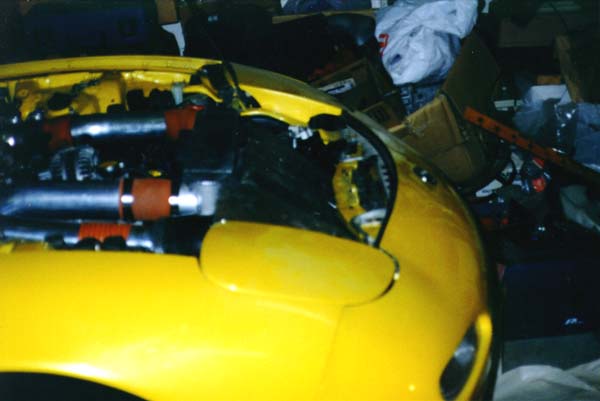
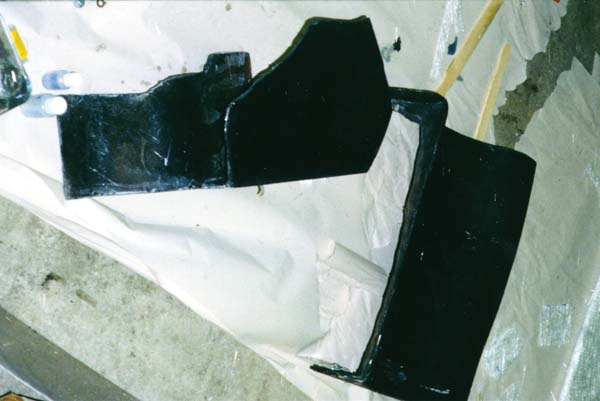
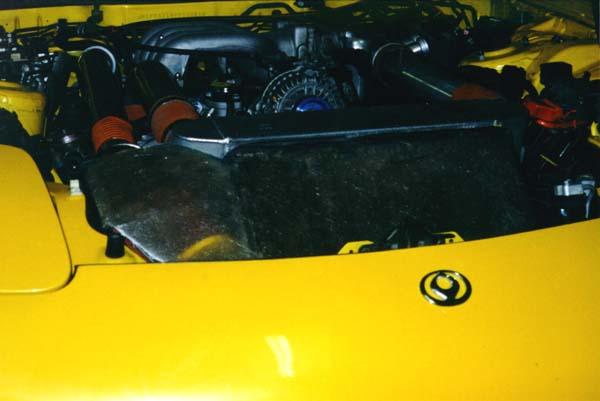
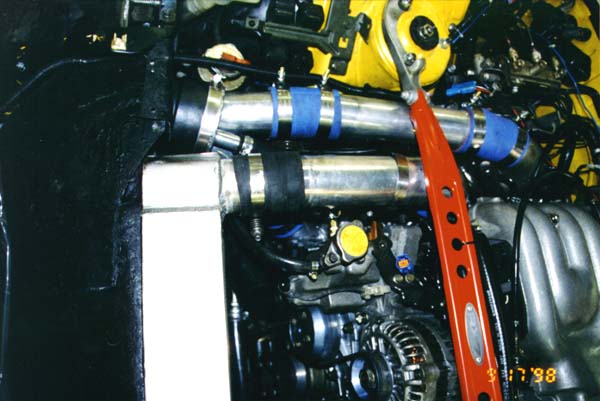
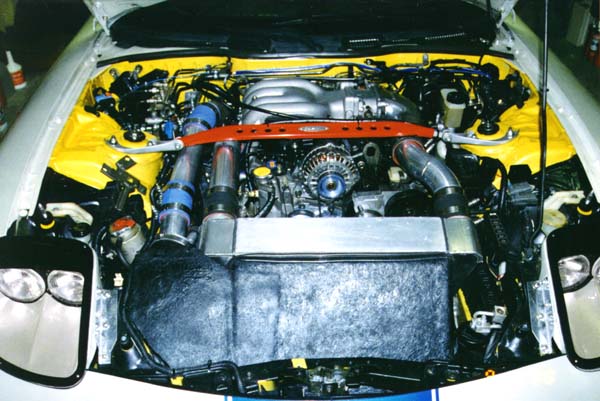
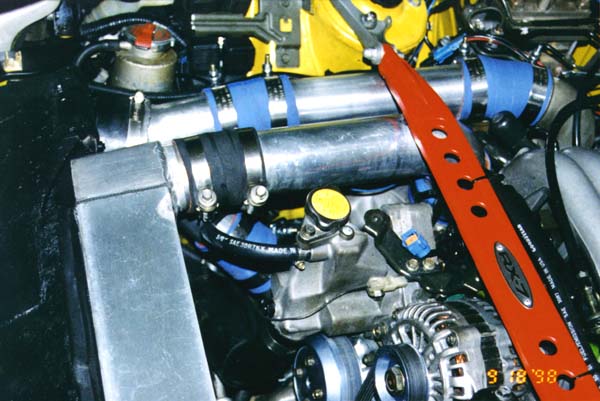
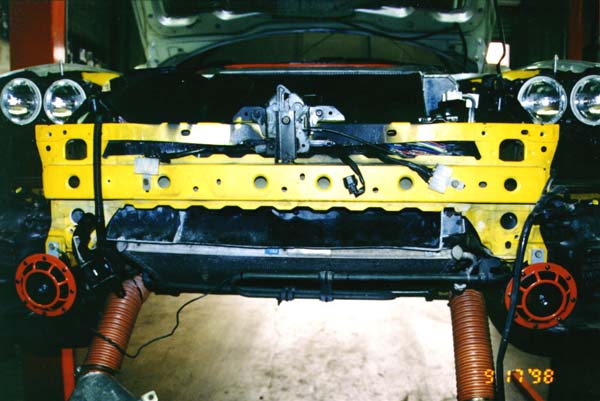
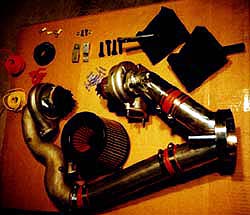
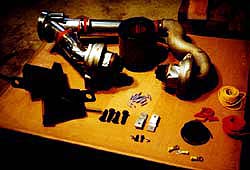
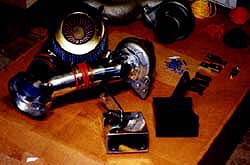
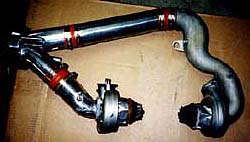
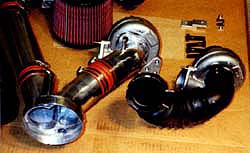
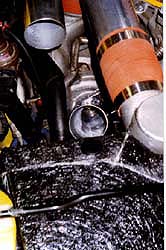
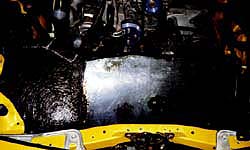
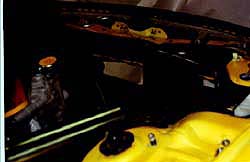
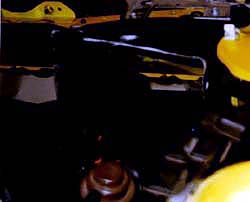
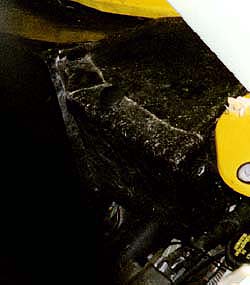
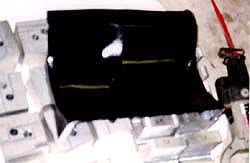

Pettit
From: richardt@lava.net (Richard H Thomason)
From: Rippin
From: "Linthicum, Sandy"
From: "Padilla, Jose"
From: Francois McKellar 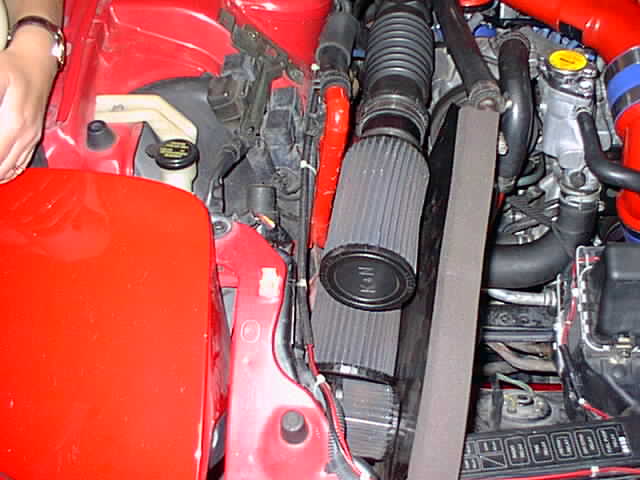
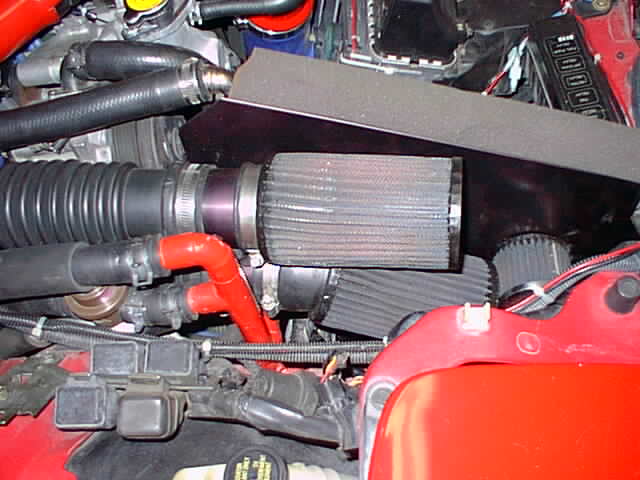
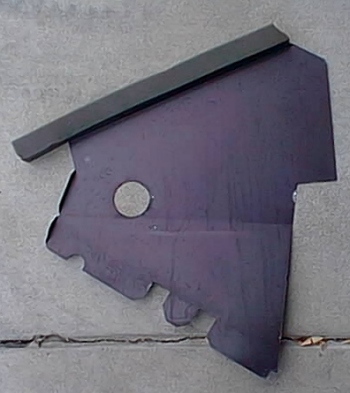

N-Tech
Date: Tuesday, July 07, 1998 5:15 PM
$310.00 if using the air pump
$285.00 if not using the air pump
$120.00 for the ducting pieces alone (4 pieces)
From: Mark An 
Racing Beat
From: David Booth
From: Rob Robinette 
Tri-Point
From: richardt@lava.net (Richard H Thomason)
From: Francois McKellar
From: rxnut@juno.com (Chris P Sychlovy)

M2 Performance
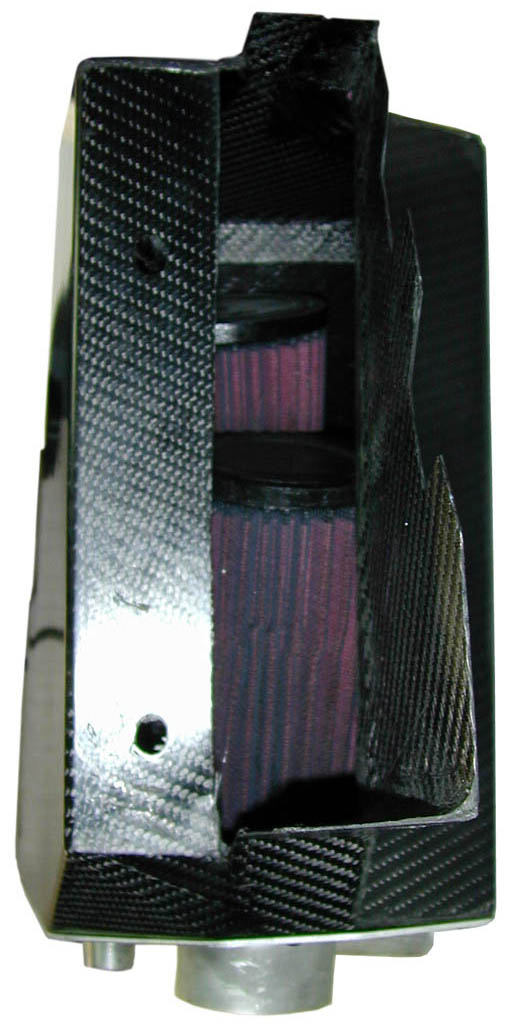
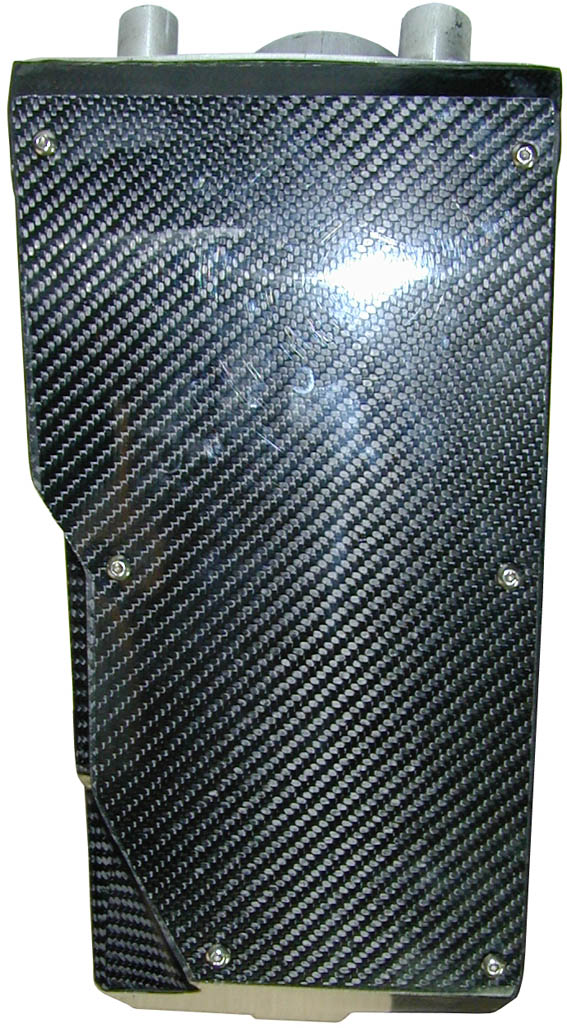
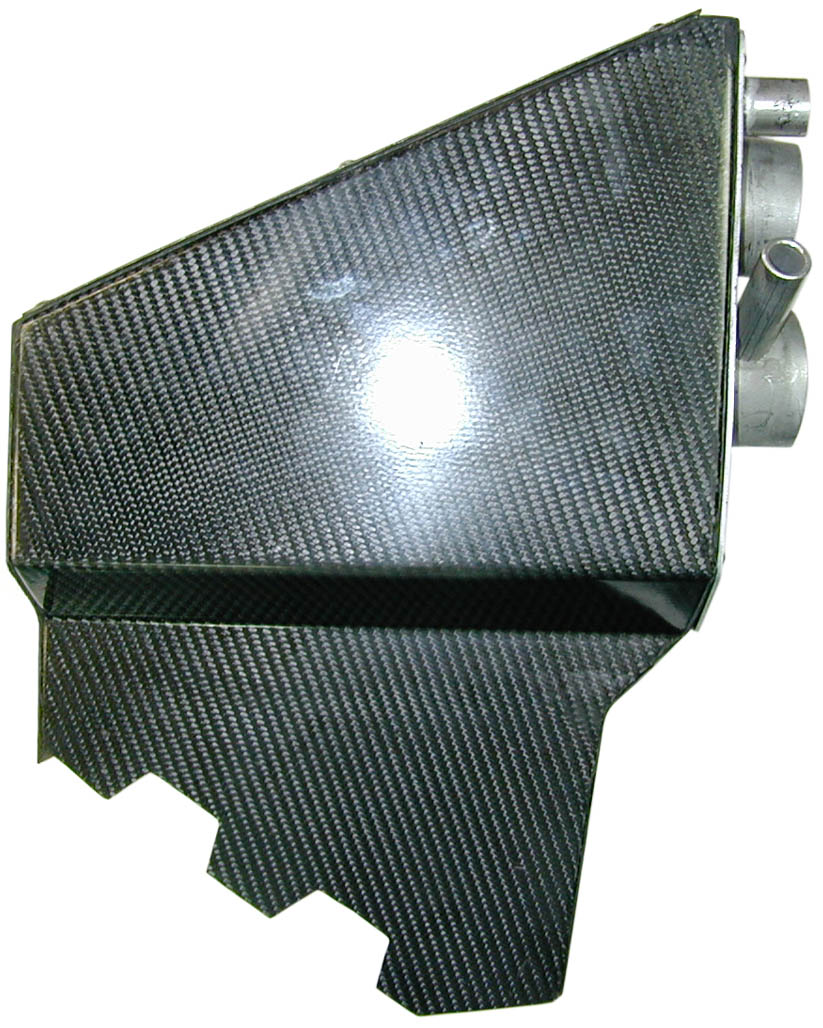
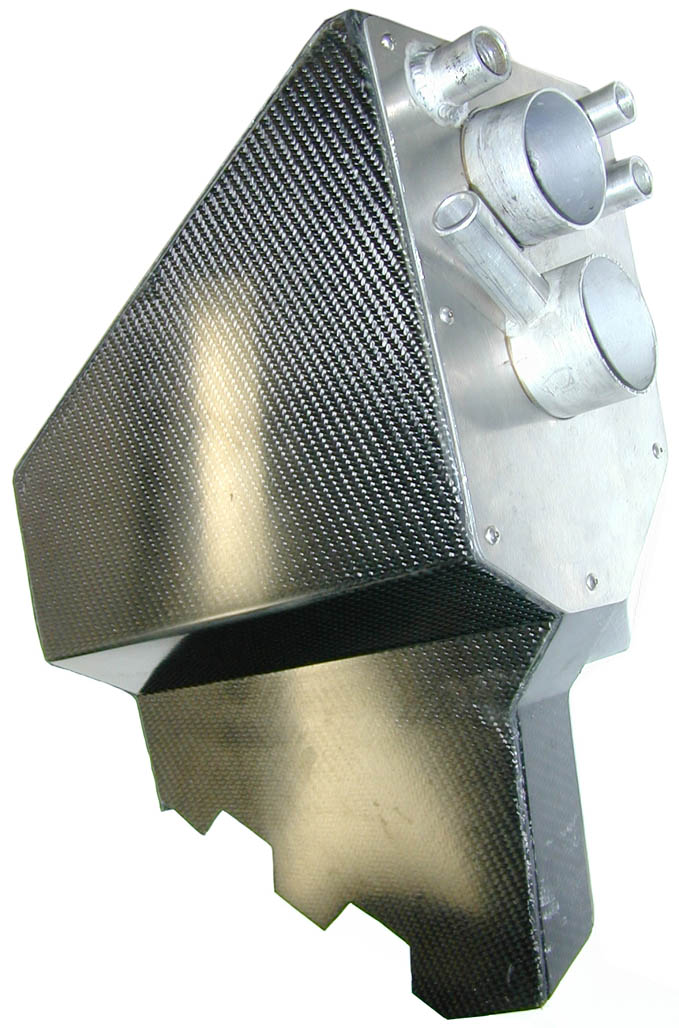
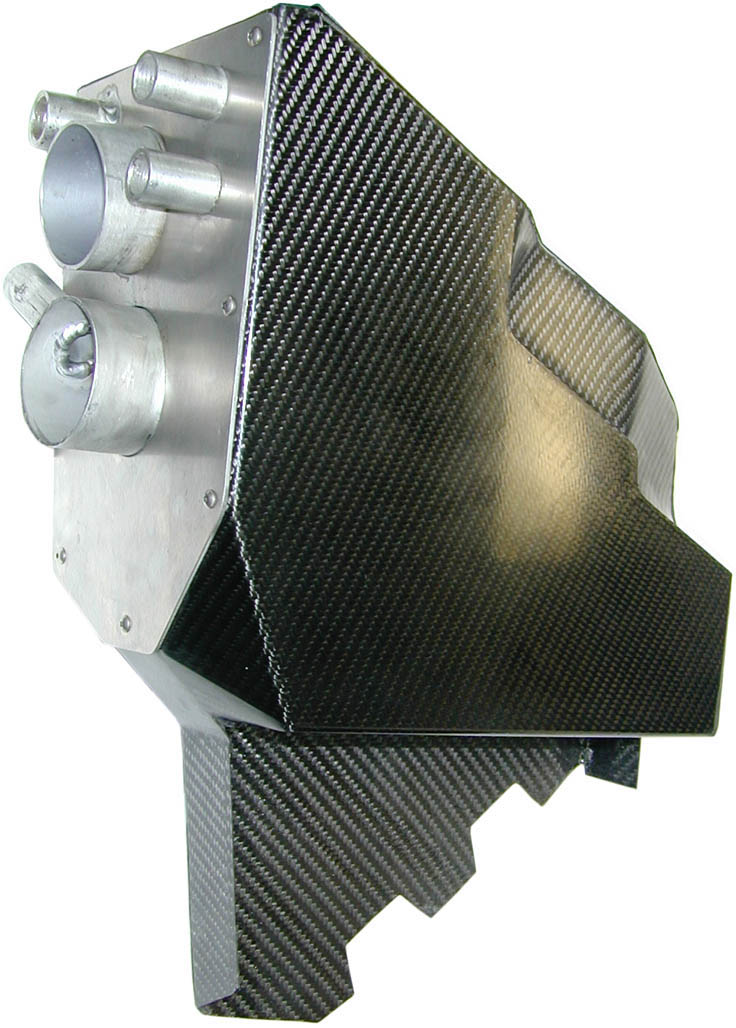
From: Ari (ari@rammail.com)
From: Dana Bourgeois
Sent: Tuesday, December 01, 1998 9:20 PM

ASP
From: "Kevin Tan" 
Weapon R
From: "Cassada, Lewis"
>From: WEAPONRUSA [SMTP:WEAPONRUSA@aol.com]
>Sent: Monday, May 04, 1998 3:04 PM
>To: Cassada, Lewis
>Subject: Re: '93-'95 RX-7 intake
>
>In a message dated 98-05-04 07:49:49 EDT, you write:
>
><< Does it replace the two rubber hoses that lead from the stock air box to
> the turbos? How does the setup handle the airpump, blow off valves,
> ect... >>
>
> dear lewis..
>Our intake does replace the two hoses.. and it does handle the air pump and
>blow offs..
From: Jeff Smith-EJS018 
DIY
From: "steven.g.cirian"
_
| |
| |
) ( _
/ \ | |
| | | |
| | ) (
----- / \
| |
| |
-----
From: "ten@lava.net"
> I saw a Miata with a NACA duct cut into its left headlight cover.
> This fed air
> into the engine compartment right above the air cleaner, but was not
> directly
> connected to an air box or anything. He had a K&N or similar filter
> on it, as
> well as a supercharger. He said the headlight cover was a standard
> piece from
> a Miata performance place, but I can't remember what the name was.
> Anyone know
> who the company was? Or if they make these for the '7?
From: "Jeff Witzer"
>> I think I mostly agree with Thom: carbon fiber hood,
>> $650, but I'd vote for a single NACA duct just behind the
>> passenger side headlamp to provide air to the air filters
>> I'd take one.
Date: Thu, 16 May 1996 13:08:58 -0400 (EDT)
>Date: Wed, 15 May 1996 22:40:35 -0700
> Just wanted to float an idea to see if it is feasible. For
>those of us with 3rd gen tourings (I know, the minority), there was
>some talk about removing the covering on the right which is used for
>the 2nd oil cooler in the R's. Could that opened oriface then be used
>to route some good cold air to the intake? Wouldn't that be a good
>idea? I was looking at some 3' hosing today, but am concerned about
>clearances and such.
> Somebody in the past mentioned some set up with an insulated
>box to separate the intake from the engine heat, wouldn't it be cool
>(he he he) to route the outside air into one such box or even the
>stock box w/ new filter? Ideas/Comments/Criticisms will be greatly
>appreciated. (plz be kind as I know little)
From: Francois McKellar
From: Francois McKellar
From: richardt@lava.net (Richard H Thomason)
From: brad barber
From: brad barber
From: brad barber
From: "Dela Huerta, Damian"
0203-0820
TKT COLD AIR INDUCTION FILTER - TOP
24.95
0203-1770
TKT COLD AIR INDUCTION FILTER - BOTTOM
24.95
0203-1390
TKT COLD AIR INDUCTION FILTER - EAM
19.95
Date: March 30, 2000
>All the other units I've seen (both in pictures and IRL), do
>not re-channel any air, they just remove the foam next to the radiator, and
>suck air through that little hole. My own temperature testing of my
>The reason why I recommend you build your own is because all the cold air
>intakes cram two little K&N filters onto the side of your car. This is nice
>if you have some big 'ol intercooler and need extra room. If you build your
>own, you can customize it to fit the filters you want.
From: NetBlazer
>the charge and relief valves outputs to the engine compartment
>instead of the airbox?
>the intake.
>might keep things a little quieter and junk out. Why not just
>cap the ports on the airbox and leave a length of open tubing on
>the outlet side of the valves. This would at least keep water
>or other junk that might get into the engine compartment.
From: rotary@mediaone.net
From: NetBlazer
> making enough boost that its not difficult to hear their discharge via
> the BOV(s).
From: "Robert DeMarino"
From: "Jeff Witzer"
From: "Steven M. Robertson"
Date: April 17, 2000
>www.unlimitedproducts.com, then click "go directly to index",
>scroll down to "scoops cowl induction" and look at SC-117.
>
>SC-117COWL INDUCTION SCOOP 2.5" HI 28" LONG(15" WIDE) $69.95

Intake Pipes / Hoses
From: "Kevin T. Wyum"
From: "Chow, Thom"
From: NetBlazer
Date: March 16, 1999
phone..........732-329-6666

Clamps
From: brad barber (bradrx7@swbell.net)
Date: April 11, 2000

Cool Air Duct
From: "NetBlazer"
> I want an after-market intake that can ONLY take air from the front of the
> car, before the air is heated or even comes close to being heated by the
> radiator and A/C, and is small enough to allow most after-market
> intercoolers. I don't know how it can be done, especially on the
> R models.
> Perhaps someone could build a duct
> that can lead from a closed box, down between the frame and radiator and
> point forward, leading to the spacer/foglight position. This duct, plus
> PFS's intercooler duct, might provide the flow the required.

Extrude Honing
From: "Jim LaBreck (ECA)"
From: "Jim LaBreck (ECA)"
From: Steve
From: " Ray Lochhead" 